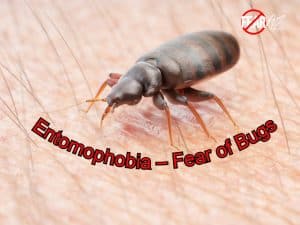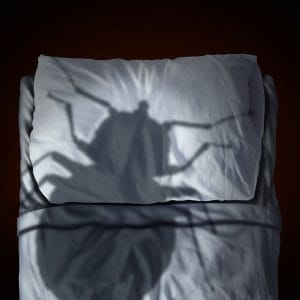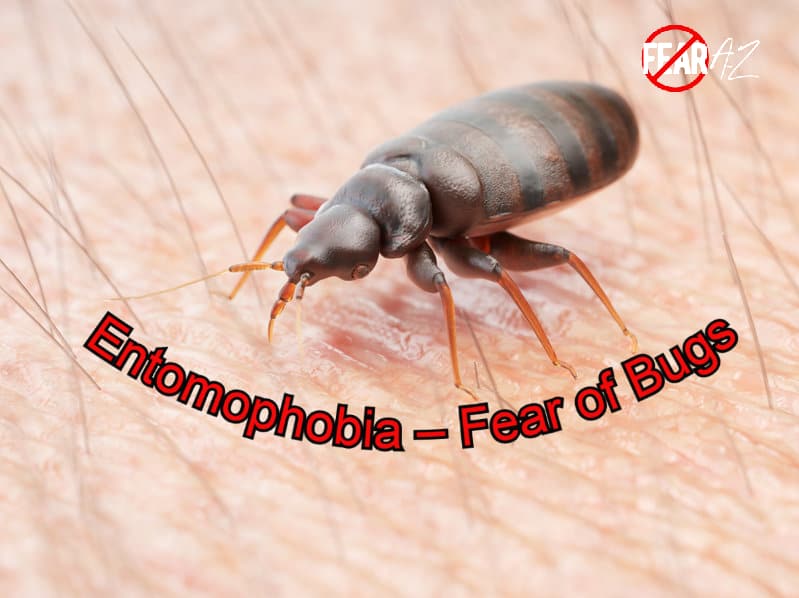Share This Article
Squashing Entomophobia, or the Fear of Bugs
Do bugs really bug you? Do the creepy crawlies really creep you out? Does the mere sight of a spider’s web cause you to wail aloud, “Oh, what a tangled web we weave!”
However poetically (or melodramatically) inclined you are toward that last one, there is no denying that we have an incredibly complex relationship with bugs. On the one hand, they certainly feature prominently in all manner of mild spooks and scares, from Tim Burton-esque Halloween decorations to more gothic and grotesque fare.

On the other hand, however, bugs are a lot more than that. Take for instance many Latin American cultures, where grasshoppers and beetles are far from a source of fear—they’re a source of sustenance.
What if you genuinely are afraid of bugs? They have a name for that—entomophobia—a fear of bugs in all their various forms.
But what is entomophobia? Is entomophobia common? Is there an entomophobia cure and, if so, can it work for you? Let’s take a look.
What Is Entomophobia?
To start at the beginning, entomophobia, meaning a fear of bugs, as established above, can take on almost as many forms as there are insects and arachnids that might frighten you. That said, it is worth noting that this is more than your garden variety concern over garden spiders. Plenty of us cringe at the sight of a spider or flinch when a grasshopper hops our way, but that doesn’t necessarily make you a sufferer of entomophobia.
What separates most phobias from just “not liking” bugs is the extreme manner in which you respond to their presence or, indeed, the very idea of them. There is a very big, very real difference between simply being startled by the thought or sight of a spider crawling in from the corner and being reduced to tears by them.
The latter forms the essence of entomophobia.
How common is entomophobia? That can be hard to determine, in large part because there are so many different variations of what might be called “a fear of bugs.”
Of course, if you know anything about “bugs” you’ll likely be shouting at the screen by now that spiders and bees are not just “bugs” per se, but are not the same type of “bug.” Of course you are right—spiders are arachnids and bees are insects—and this in turn hints at the fact that entomophobia is indeed made up of sub-phobias for different kinds of bugs. Chances are good you have heard of arachnophobia, for example. In Greek mythology, arachnid, the root of the word arachnophobia, comes from Arachne, a woman prideful enough to believe herself a superior silk spinner to Athena and foolish enough to make the challenge in person. She finds herself transformed into an eight-legged web spinner, making her descendants the friendly neighborhood spiders we know—and often fear—today.
So the question arises—are you afraid of “bugs” in general, or are you afraid of a specific kind of bug? If you’re only afraid of a certain kind of bug, that narrows the field as to which bugs you might have to avoid.
Then, there is the question of why you fear these particular bugs.
Some people fear bugs for fear of getting bitten, infected, or otherwise harmed by them. Others simply do not like the sight of them. Still more associate them with a fear of infestation.
Again, it is important to separate legitimate concern from outright fear. Infestations are a legitimate thing to be worried about. They can spread disease, cause illness, devastate the value of your property and, besides all that, they’re downright disgusting. Concerns about encroaching cockroaches or termite colonies shouldn’t be met with condescension.
On the other hand, if a single bug causes an individual to cower in the corner or want to move out of their home altogether, that’s another story. If their reaction is disproportionately fearful, chances are a phobia plays a part.

Causes and Symptoms
The most common cause of entomophobia is, as you might expect, a negative interaction with bugs. The majority of our phobias are forged while we are children. The younger we are, the greater impact potential traumas can make.
Such is the case with bugs. Perhaps you fell into a nest of termites and were badly bitten, or perhaps you were stung by a bee and suffered a severe reaction. (It is worth noting here that, if you do have an allergic reaction to insects such as bees and have a reasonable aversion to them on that basis, you do not have a phobia.)
That being said, temperament can also have something to do with the formation of this phobia. If you are a particularly sensitive child, you may be more susceptible to sudden scares, especially those provided by bugs. This, combined with the impressionable nature of youth and a bad encounter with bugs, can form the catalyst of entomophobia.
Then there is family history. Social phobias are, well, social. We are “frighteningly” good at communicating fear to one another, and if we are already susceptible to fear by being sensitive or having had previous bad experiences with a potential trigger (say, bugs) it can lead to the formation of a phobia. As such, if you have a member of the family who is deathly afraid of insects, they may convey that fear to you in such vividly compelling detail that you start to catastrophize and fear them, too.
Some of the most common symptoms of entomophobia include:
- An immediate, visceral, and intense feeling of anxiety or fear whenever you see or even think about a spider, insect, or whatever kind of bug triggers your particular condition
- The anxiety in question gets worse with proximity
- The understanding that your fear is irrational but the inability to do anything to change it
- Being rendered helpless by your phobia
In addition to these more psychological symptoms, there are also physical signs as well, including:
- Rapid heart rate
- Tightness in your chest
- Panic attacks
- Sweating
- Heavy breathing
- Dry mouth
- Trembling
- A propensity to break out into tears, especially in children
How to Cure Insect Phobia
With Self-Treatment and Professional Treatment Options
Given how common bugs are, you’ll often want to look for an entomophobia treatment that you should first try tackling yourself. Mindfulness exercises such as meditation, journaling, and self-help groups can all be beneficial.
If these don’t help, you may want to consider exposure therapy. This is just what it sounds like: being exposed to the bugs in question to prove to yourself that you can survive in their presence. It is critical that you do this under carefully controlled circumstances and with people whom you absolutely trust and who support you so you don’t “confirm” your fear but rather overcome it.
Cognitive behavioral therapy, or CBT, can also be beneficial for rewiring your brain’s association with certain troublesome insects (ie, changing associations of the word “bee” from stinging pests to honey-making friends).
In rare cases, antidepressants, beta blockers, and other medications may be prescribed, though in most cases entomophobia is treated without medication.
Squash your fear of insectoid and arachnid pests by learning how to treat entomophobia today.



